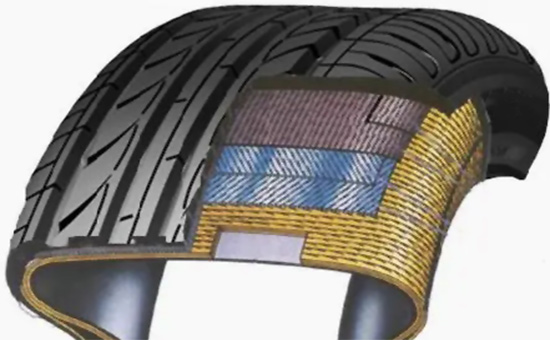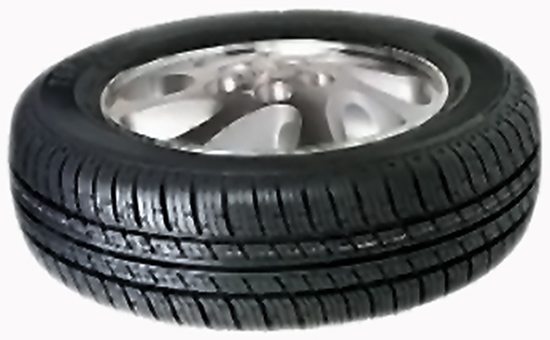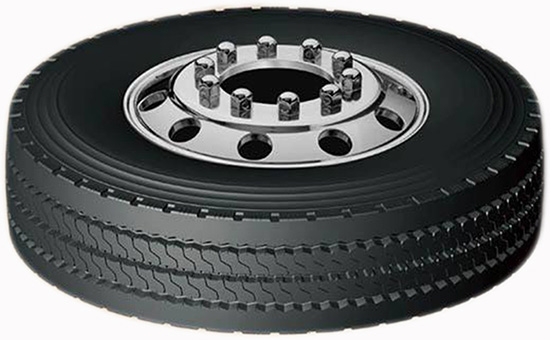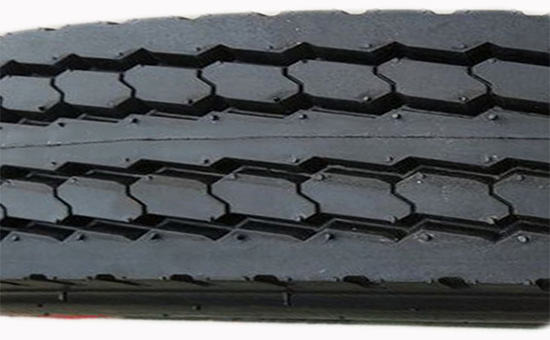
Radial tires are steel tires, which have the characteristics of abrasion resistance, puncture resistance, cushioning performance, stability, safety performance, low driving temperature and high mileage. Radial tires can be divided into carcass, tread, sidewalls, shoulder pads, belts, etc. Different parts have different requirements for the physical properties of the rubber used. In actual production, the tire rubber powder processed from waste tires can be re-added to the production of radial tires to reduce production costs. So which parts of radial tires can use tire rubber powder?
1. Tread running surface
The running surface of the radial tire tread refers to the rubber layer above the bottom of the tread groove and in normal contact with the ground. It requires abrasion resistance, puncture resistance, and good grip performance. It is generally made of natural rubber or natural rubber/styrene butadiene rubber/ Butadiene rubber is processed with 2YLYY127 as the main raw material. An appropriate amount of tire rubber powder can be added to the formula of the radial tire tread running surface, which can further improve the wear resistance of the tread running surface while reducing the cost.

2. Carcass
The carcass of radial tires is the carcass, and most of them are composed of a single-layer steel cord, which gives the tire sufficient strength and bears the load and vibration during driving. It is the stress structure of the entire pneumatic tire. The carcass rubber of radial tires can be mixed with about 5-20 parts of fine tire rubber powder to reduce costs.
3. Shoulder
The shoulder of a radial tire is the transition layer among the crown and the sidewall, which appropriately improves the thermal conductivity of the rubber, so that the heat can be released in time to avoid high temperatures, which can solve the problem of shoulder space. Radial tire shoulder rubber materials are generally processed from natural rubber and butadiene rubber as the main raw materials, and are vulcanized with a sulfur-accelerator system, combined with carbon black, white carbon black, and thermally conductive graphite. In actual production, the radial tire shoulder rubber material can also be mixed with waste tire rubber powder in an appropriate amount to reduce the cost of raw materials.

4. Bead
Radial tire bead is mainly composed of steel wire ring, upper and lower apex core, steel wire covering, spigot protective rubber and other components; steel ring rubber, bead core covering, apex core and other parts can be added with waste tire rubber powder in an appropriate amount . The main function of the traveler is to give the bead the necessary strength and rigidity; the function of the bead core wrap is to make the traveler and the apex core form a whole to prevent displacement and facilitate forming; the apex is the apex, which is attached The triangular rubber strips on the traveler give the bead shape, volume and stability.
5. Sidewall
Tire sidewall rubber is the rubber layer on the outer ply of the sidewall. Its function is to prevent the carcass from mechanical damage, atmospheric effects and moisture. The sidewall of radial tires needs to withstand periodic flexural deformation, oxygen, ozone, and ultraviolet rays. Corrosion requires good flexural resistance and aging resistance. In actual production, the side rubber of radial tires can be mixed with more tire rubber powder. For example, the mixing amount of tire rubber powder in the side rubber of car radial tires can reach about 50 parts.

The dosage of tire rubber powder in different parts of radial tires is different, and the dosage in the same part of different types of radial tires is different. Later, the editor will continue to share with you the specific usage and dosage of tire rubber powder in different parts of various radial tires.
Exclusive original article [commercial authorization] reprint, excerpt and excerpt in any form are prohibited without written authorization. Focus on Hongyun rubber: learn the process formula and raw material technology of producing rubber products from recycled rubber to help you reduce costs and increase profits